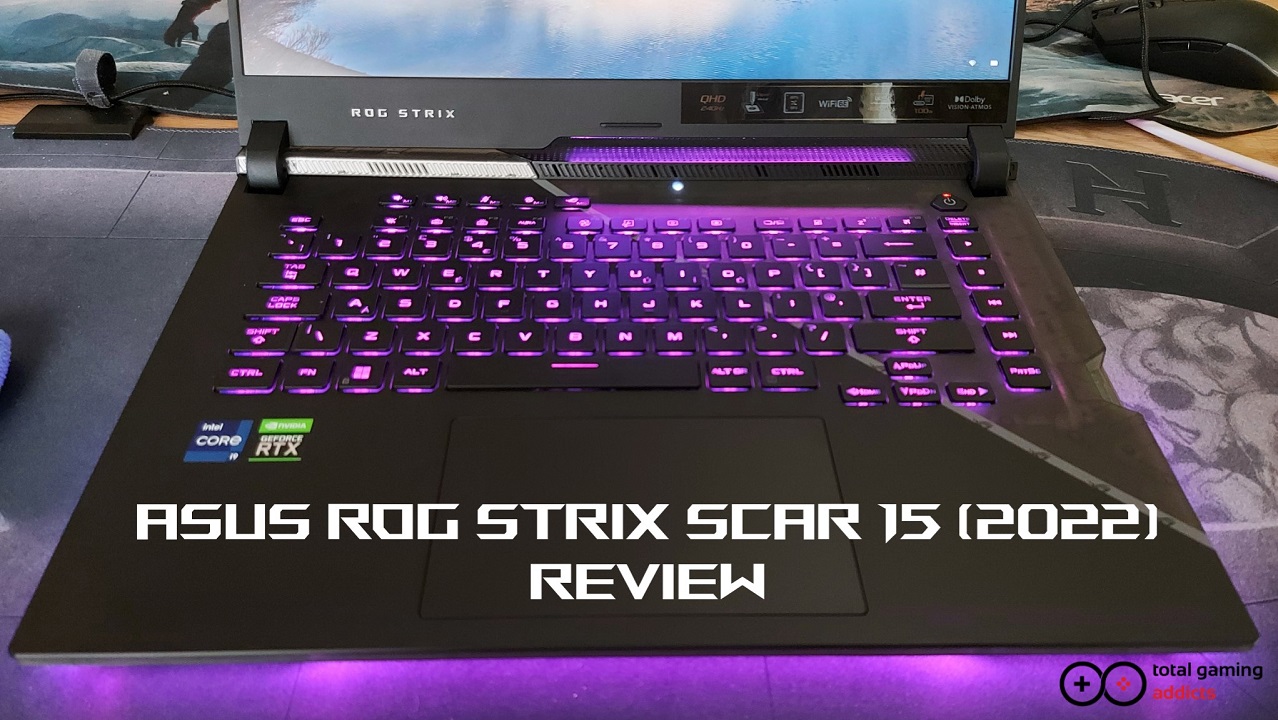The upgrade to 12th Gen Intel CPUs and Nvidia 30-series Ti GPUs has brought massive gains to the already powerful Scar 15
- Manufacturer: ASUS ROG
- Model: Strix Scar 15 (2022)
- Part number: G533ZW
- Price when reviewed: £2,299
- Supplied by: ASUS
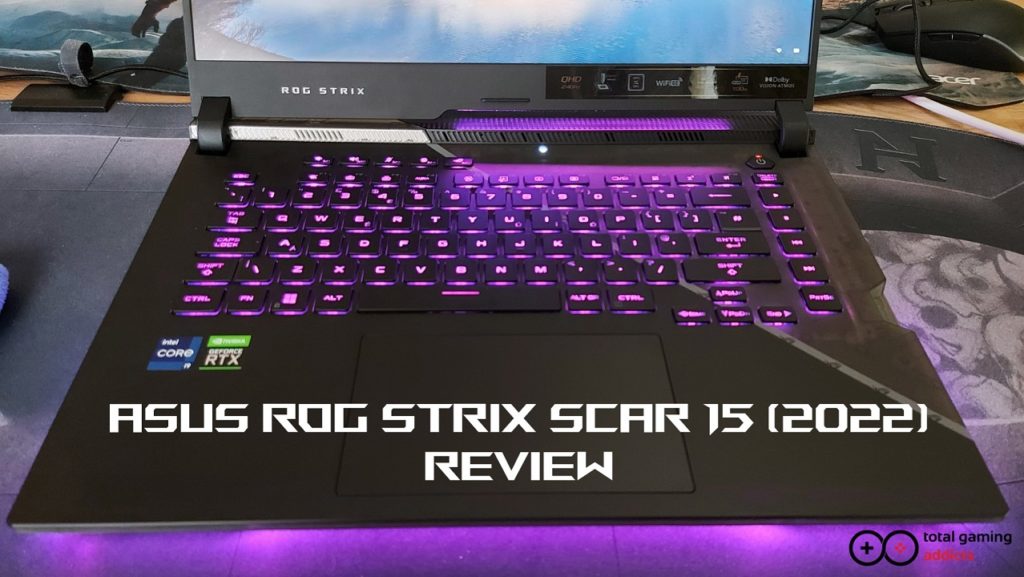
ASUS ROG Strix Scar 15 Review
At first glance the differences between the new Scar 15 and the 2021 model are subtle, but the improvements are far more than skin deep. Cosmetically, the chassis is almost identical to the previous model, with a few minor details and flourishes added, but look at the components and it’s a whole other story. The switch to the new 12th Gen Intel CPUs has brought significant performance gains, as has the vastly increased TGP (125W/150W Dynamic Boost) of the RTX 3070 Ti and the inclusion of brand new DDR5 system memory at 4800MHz.
The 2021 ROG Strix Scar 15 we reviewed had an RTX 3080 16GB combined with an AMD Ryzen 9-5900HX CPU and 32GB DDR4 RAM, and it retailed for £2,699 when new. The 2022 model in the specification we received for testing (RTX 3070 Ti) can be bought for just £2,299, yet performance is equal to, or in many cases far better than, the outgoing model.
I’m very surprised that the RTX 3070 Ti performs as well as it does. It’s remarkably close to the RTX 3080 16GB when it comes to rasterised graphics, but it actually outperforms most of the 3080 systems we’ve tested when you add RTX to the mix. This is an incredibly potent system that represents a significant upgrade to the previous Scar 15, as well as positively trouncing far more expensive systems released less than a year ago.
Design and build
The Strix Scar 15 is almost identical to the 2021 Scar, but with a few tweaks – some good, some bad. The diagonal slash across the keyboard tray has been kept, but it seems to be more translucent now and has a bit of extra detailing. I liked it before, but the new implementation hasn’t grown on me yet. It’s just got too much going on with the white stripe and faded ROG lettering.
ASUS has also done away with the micro-dimples on the lid, which I’m down with. I liked the old style, but I like the new style, too.
They’ve kept my favourite feature, though, which I’m very happy about. The RGB lighting is awesome, spanning the front of the laptop and partway around the sides and it’s fully compatible with ASUS Aura Sync. I love the way it’s slightly recessed, as it keeps it from shining in your eyes and makes it look like it’s floating above the desk, as well as making the Scar 15 seem slimmer than it really is.
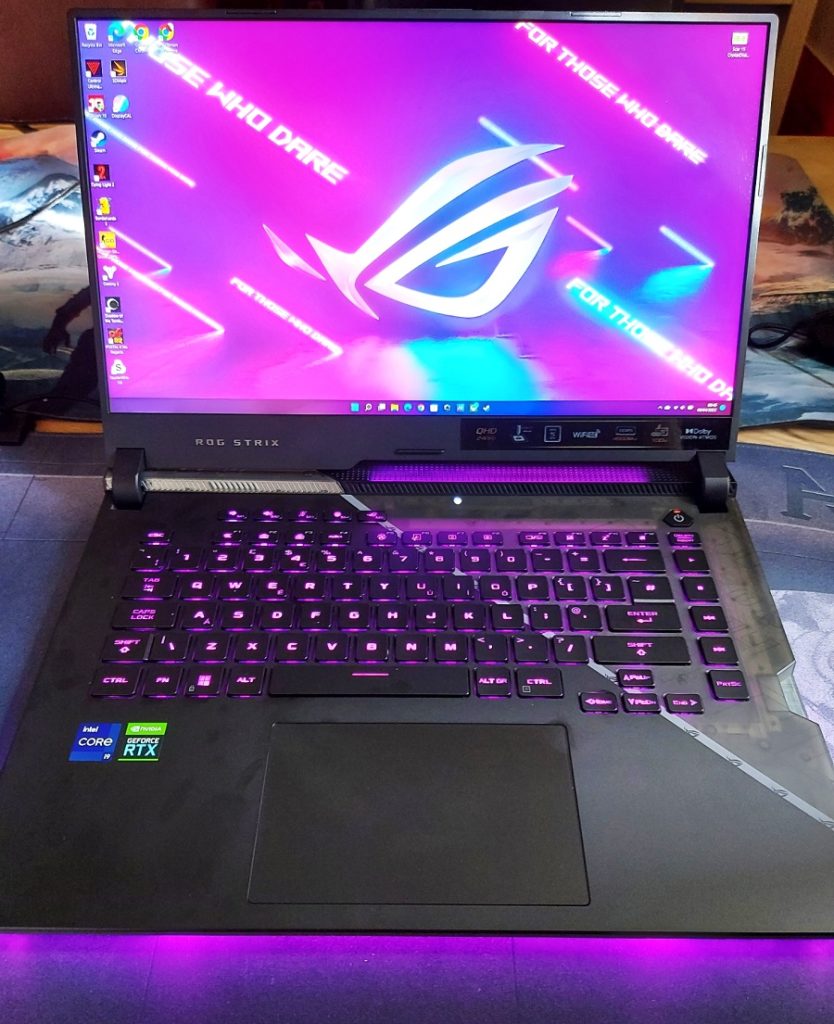
The port locations have been kept the same, with the majority kept at the rear. This helps with cable management and keeps the system looking tidy. ROG’s Zephyrus laptops with the ErgoLift hinge have all of their IO at the sides, which can be a pain when you have multiple display inputs and a chonky power cable jutting out – no such issue here.
Another welcome change is that the power button is now raised instead of sitting flush with the surface of the keyboard tray. There’s still no biometric security in the form of a fingerprint scanner, though, and despite cameras popping up in some of their newer machines, the Scar 15 goes without again.
My least favourite part of the Scar 15 is one of the main gripes I had with the previous Scar – The surfaces are an absolute fingerprint magnet. If your fingers are anything but sparkling clean and dry, you’re going to leave ugly smudges everywhere. Unlike most tech, where my trusty microfibre cloth can remove practically anything, I found smudges leftover from the previous reviewers that needed a dampened cloth to remove.
Appearances aside, the build quality is fantastic. The display hinge holds the screen firmly in place but can be lifted one-handed without pulling the rest of the laptop with it. There’s a minimal amount of flex in the lid and keyboard tray, and it feels like a solid and high-quality build.
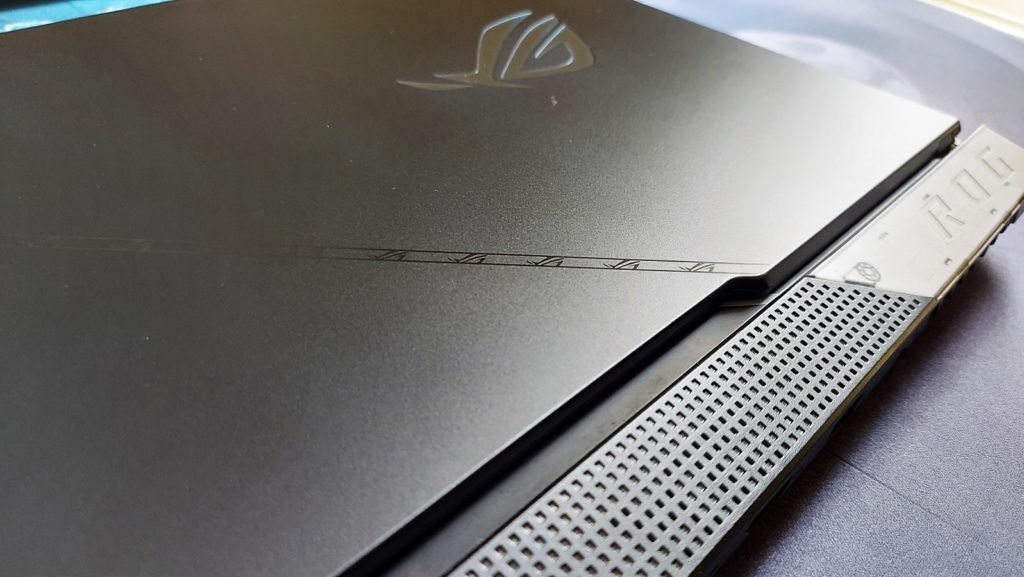
Internals and upgrades
To access the inside of the Strix Scar 15 you’ll need to remove 11 small screws – be careful when removing the case, as there are two flex cables at the front edge connecting the RGB case lighting. Once inside, you’ll find a spare M.2 2280 slot, as well as a spare SODIMM slot if you want to add to or replace the DDR5 memory. In the Scar 15, the 16GB of installed RAM is removable, which is far preferable to RAM soldered to the PCB. This gives the Scar 15 a max RAM capacity of 64GB.
It’s almost identical to the 2021 Scar 15 inside, but ASUS has added an additional metal plate over the top of the central heat pipes covering the CPU and GPU.
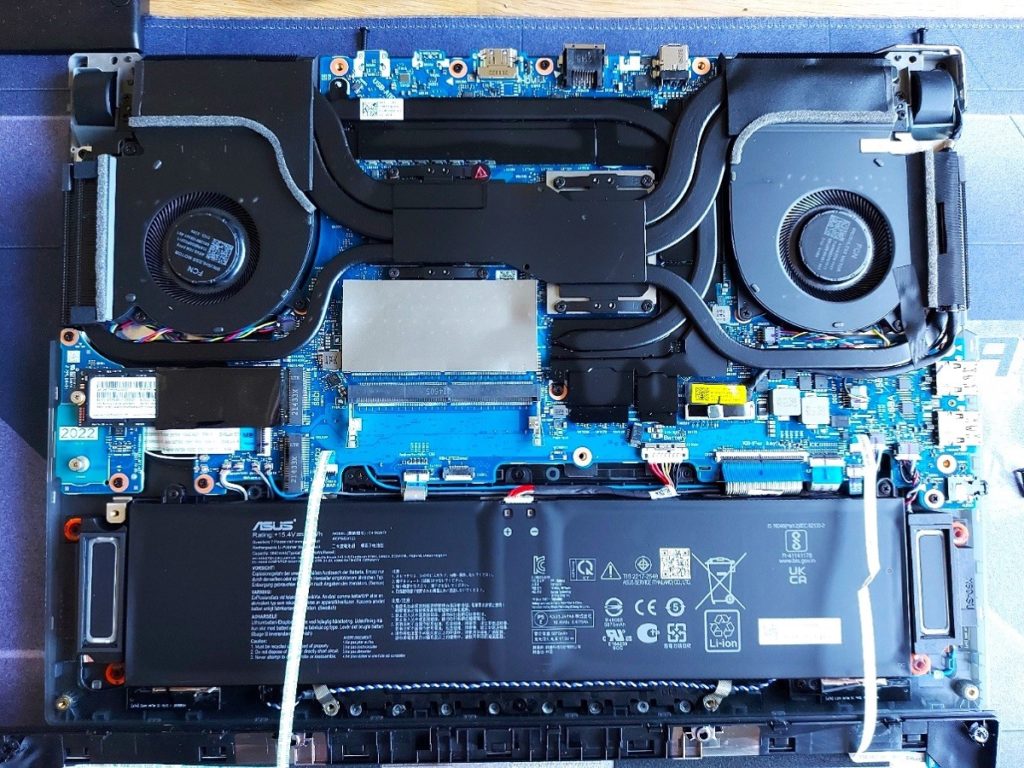
Keyboard and trackpad
ASUS has gone back to its regular switches in the Scar 15 – It may not have been that popular, but I liked the clicky hybrid optical-mechanical keyboard. Typing on the new keyboard is great, though. It’s quiet in use, responsiveness is excellent
The tenkeyless layout is similar to how it was before, with a bank of shortcuts across the righthand side and top of the keyboard, but the shortcuts at the top are now assignable M keys. Although you (obviously) can’t change the logo on the keys, you can reassign them to do almost anything you choose. I’ve swapped the mic mute with system volume muting, but if you want to go further you can even assign macros to these keys.
As always, I love the easy to read ROG font, and the FN key shortcuts have become second nature to me now, offering quick and convenient control of the keyboard’s functions.
You also get full per-key assignable RGB lighting, which can be tweaked with ASUS Aura Creator. There are loads of cool effects you can create with a little patience, or you can choose from the various presets. A slight inconvenience is that the F keys aren’t lit, though. You can work it out easy enough from their positions in the banks of four keys, but if it’s dark you can’t tell at a glance.
The oversized glass-surfaced trackpad is smooth to the touch and has edge-to-edge responsiveness. The under-surface mouse buttons are clunky, but no more so than on almost every other trackpad I’ve used. If you’re using the Scar 15 for gaming you’ll likely be using a controller or dedicated mouse, but it’s a very competent trackpad for the light tasks and media consumption it’s likely to be used for.
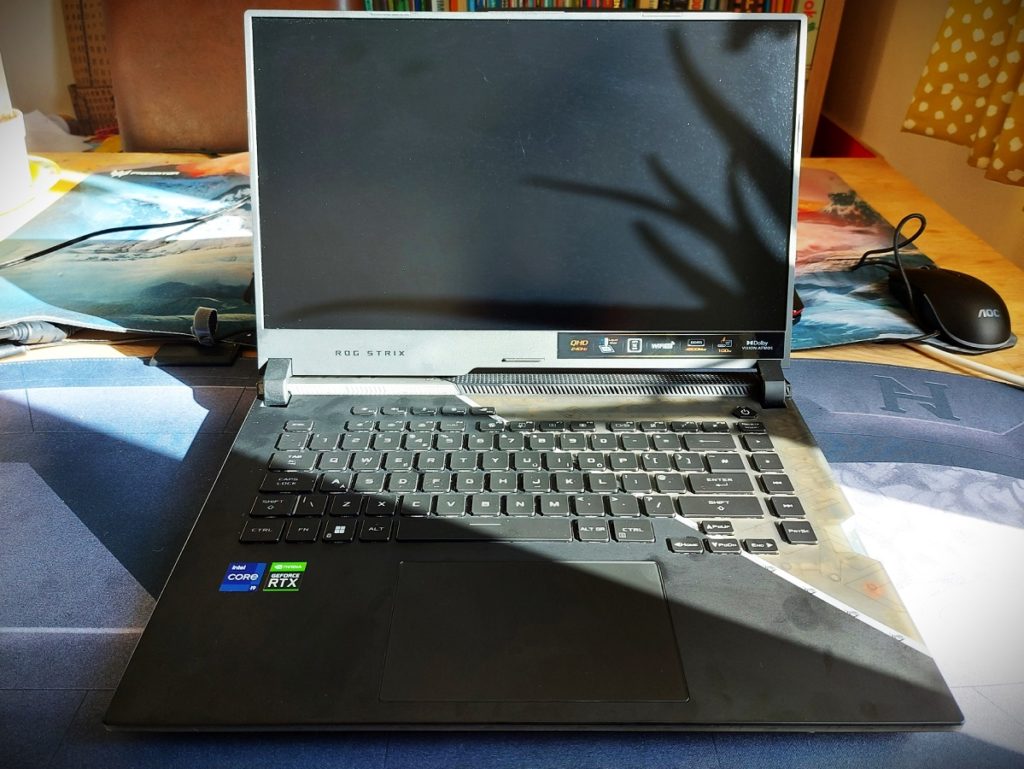
Connectivity and I/O ports
The port selection is excellent and has been updated to include HDMI 2.1 and Thunderbolt 4 connectivity. The HDMI 2.1 port connects straight to the RTX GPU, and of the two USB-C inputs, one bears the DisplayPort ‘DP’ logo and connects directly to the discrete GPU (which also enables G-Sync), while the Thunderbolt 4 USB-C connection connects to the Intel iGPU. Both USB-C ports support KVM as well as up to 100W charging from a suitable source.
With this configuration, you can run three additional displays as well as the inbuilt display, or if you need additional IO, you can plug in an inexpensive USB-C hub and vastly expand your connectivity options. This is a very handy addition for anyone who uses a lot of peripherals or creatives who may need to add SD card readers.
Because ASUS has added two USB-C ports now, that means there are only two USB 3.2 Gen 2 Type-A ports, both located on the left side.
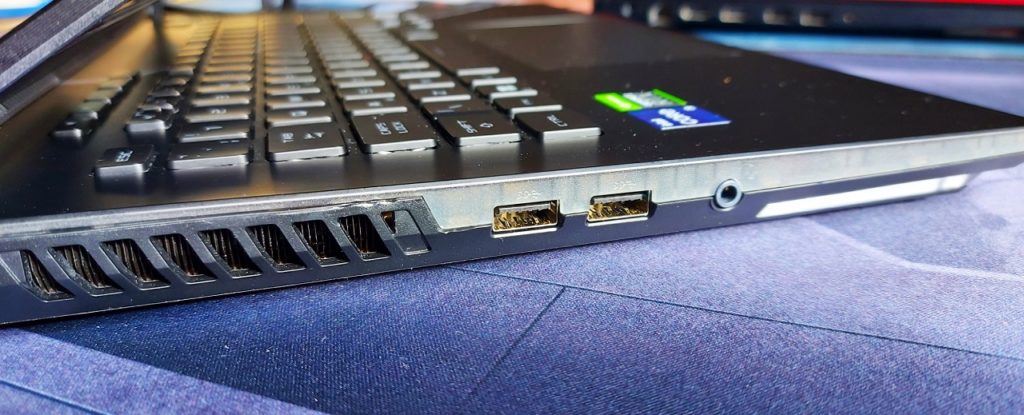
To the left, there are two USB 3.2 Type-A ports and a 3.5mm combi-jack port.
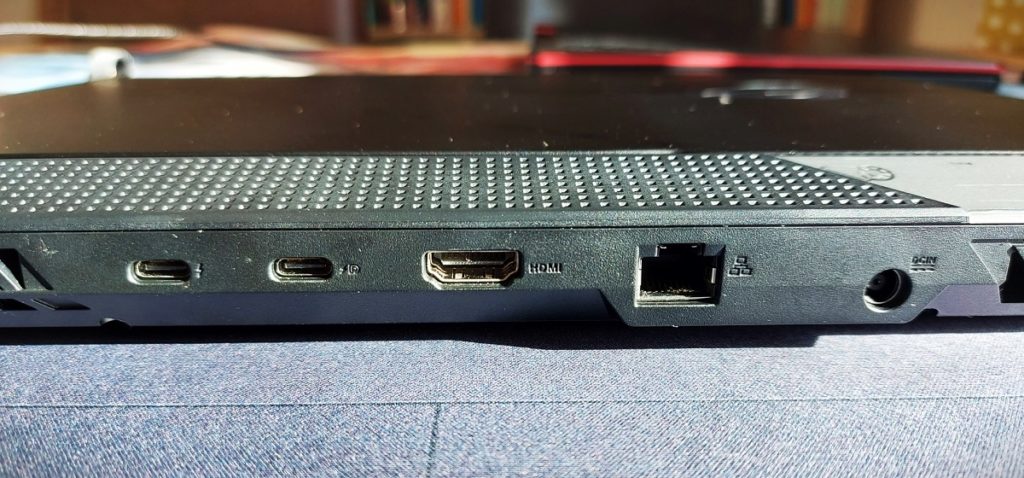
At the rear, there is a 2.5 gigabit RJ-45 ethernet port, HDMI 2.1 port, USB 3.2 Gen2 Type-C and Thunderbolt 4 USB Type-C port, and the power connector.
